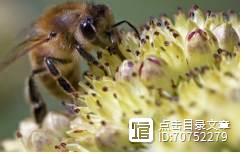2022美国高中数模赛A题翻译及思路
思路:收集蜜蜂与时间的关系数据,用统计回归模型。
蜜蜂的需求(不仅仅是蜂蜜)
蜜蜂和其他一些重要动物对人类在地球上的生存至关重要。与蜂蜜生产一起,这些昆虫为许多树木和植物提供了重要的授粉作用,这些树木和植物为我们的生存提供了食物。2007年,蜂群崩溃症(CCD)一词被用来描述世界各地蜜蜂数量的下降。[1] 蜜蜂数量下降可归因于病毒、杀虫剂、捕食者、栖息地破坏和环境条件等因素。
需要考虑的一些信息(但您可以在网上找到其他有用的信息):
蜂可以行进20公里,但通常停留在离蜂巢6公里以内。[2]
一个典型的蜂巢包含20000到80000只蜜蜂。
一只蜜蜂可以在一天内参观大约2000朵花或更多。
由于夏季工作量大,大多数蜜蜂都会累死自己,导致寿命缩短。
在秋季和冬季,蜜蜂可能活得更长一点(四到六个月)。

图片来源:pixabay.com
蜜蜂的活动水平、花粉消耗量和蛋白质丰度影响其寿命。
要求
1.开发一个模型来确定蜜蜂群体随时间的数量。
2.对模型进行敏感性分析,以确定哪些因素(如寿命、产卵率、受精卵/未受精卵比率或其他因素)对蜂群大小影响最大。
3.建立模型并预测你需要多少个蜂巢来支持一块20英亩(81000平方米)的土地授粉,这块土地上种植的农作物从授粉中受益。
4.为提供您开发的信息的网站创建一个非技术性的单页博客或信息图。
总页数不超过25页的PDF解决方案应包括:
一页摘要表。
目录。
您的完整解决方案。
一页博客或信息图。
参考列表。
注意:HiMCM竞赛对您提交的PDF解决方案有25页的限制。您提交的所有方面都超过了25页的限制(摘要表、目录、参考列表和任何附录)。
2022 HiMCM
Problem A: The Need for Bees (and not just
for honey)
Honeybees, along with a few other key animals, are critical to human
existence on our planet. Along with honey production, these insects provide the
vital role of pollination of many trees and plants that provide food for our
survival. In 2007, the term Colony Collapse Disorder (CCD) was created to
describe the decline of honeybee populations around the world.[1] Bee decline can be attributed to
factors such as viruses, pesticides, predators, habitat destruction, and
environmental conditions.
Some
information to consider (but you may find other helpful information online):
·

Honeybees can travel up to 20 km, but typically stay within 6 km of
their hive.[2]
·
A typical honeybee hive contains between 20,000
and 80,000 honeybees.
·
A single honeybee can visit approximately 2,000
flowers or more in a single day.
·
Because of the high workload during summertime,
most honeybees work themselves to death, resulting in a shorter lifespan.
·
During autumn and wintertime, honeybees
may
live a bit longer (four to six months).
Photo credit: pixabay.com
·
A honeybee’s level of activity, pollen
consumption, and protein abundance impacts itslifespan.
Requirements
1.
Develop a model to determine the population of a honeybee colony
over time.
2.
Conduct sensitivity analysis on your model to
determine which factors (e.g., lifespans, egg laying rates,
fertilized/unfertilized egg ratios, or other factors) have the greatest impact
on honeybee colony size.
3.
Model and predict how many honeybee hives you
will need to support pollination of a 20-acre (81,000 square meters) parcel of
land containing crops that benefit from pollination.
4.
Create a non-technical, one-page blog or
infographic for a website that provides the information you developed.
Your
PDF solution of no more than 25 total pages should include:
·
One-page Summary Sheet.
·
Table of Contents.
·
Your completesolution.
·
One-page blog or infographic.
·
References list.
Note:The HiMCM Contest has a 25-page
limit to your PDF solution submission. All aspects of your submission count
toward the 25-page limit (Summary Sheet, Table of Contents, Reference List, and
any Appendices).
References
[1] Yanes, J. (2021). The Devastating
Consequences of a World Without Bees. Openmind [Internet]. .
[2] Greenwood, D. (2022). How Far Do Bees
Travel? BeehiveHero [Internet]. /how-far-do-bees-travel-from-their-hives.
| ©2022 by COMAP, Inc. | www.comap.com | www.mathmodels.org | info@comap.com |
高三生物总复习:必修一易错矫正与长句背诵
生物必修一必背知识点(一轮)第1讲走近细胞易错矫正1.能进行光合作用的生物≠真核生物,如蓝藻是原核生物,细胞中无叶绿体但含有叶绿素和藻蓝素,能进行光合作用。2.能进行有氧呼吸的生物≠真核生物,如需氧型的原核生物的细胞质和细胞膜上含有与有氧呼吸有关的酶,虽然没有线粒体,但是也能进行有氧呼吸。3.原核生物≠原生生物,原生生物是低等的单细胞真核生物,如草履虫、变形虫等。诺哈网2023-08-03 11:25:320000对新高中生英语学习的一二建议 - 白话英语202130(2021年增补版,供需要的朋友参考)
每次新学期开学,总有朋友让我给新高中生提几条英语学习的意见和建议。承蒙大家看得起,感谢你们!我有什么资格提这种建议呢?我又没读过高中!我是读的中专。好在,我教过高中!那OK,今天,我就跟大家说说新高中英语学习需要注意一二的地方吧,说得好你们给点打赏,说得不好,你们就当没听到。一、不要把你们的课文配套录音随手丢在一边,要充分利用起来0000高一数学最难的对数函数,我只讲3种演变逻辑,全班考满分
诺哈网2023-08-21 19:34:240000高中生解题策略做题规划熟悉练习概念理解审题精细掌握解题技巧经验积累做题检查
高中生可以使用以下解题策略:1.做题规划:定期制定做题计划和时间,将做题的时间分散到每一天。2.熟悉练习:练习相关题型,熟悉题目的类型,熟悉做题技巧,提高解题效率和准确率,培养自信心。3.概念理解:理解每一个概念,阅读有关材料,包括教科书,阅读难题,词句的历史及文化背景,为解题作铺垫。4.审题精细:理解问题,了解问题的要求,及时记录问题,查找信息来源,并根据所需的信息提供解答。0000





